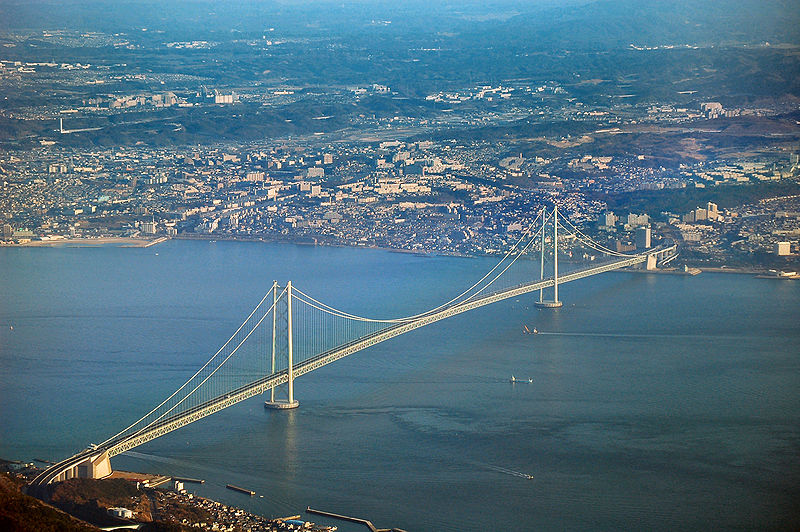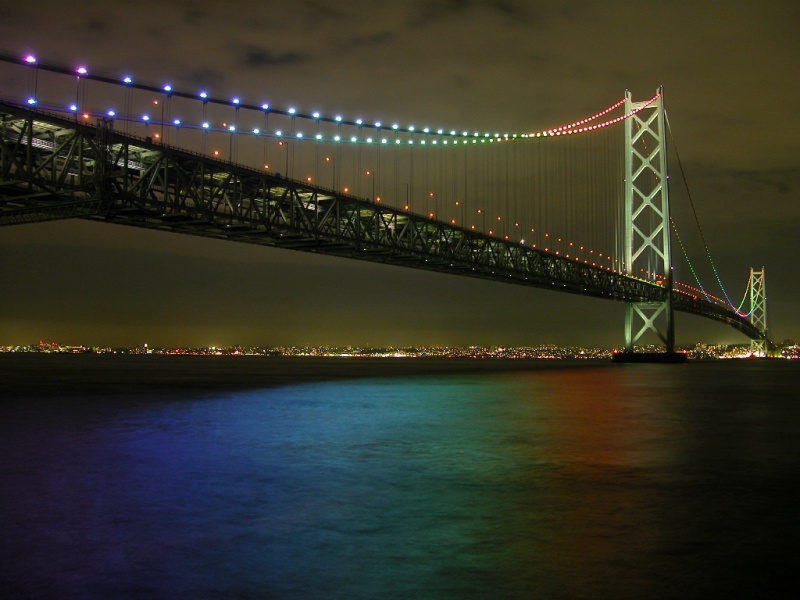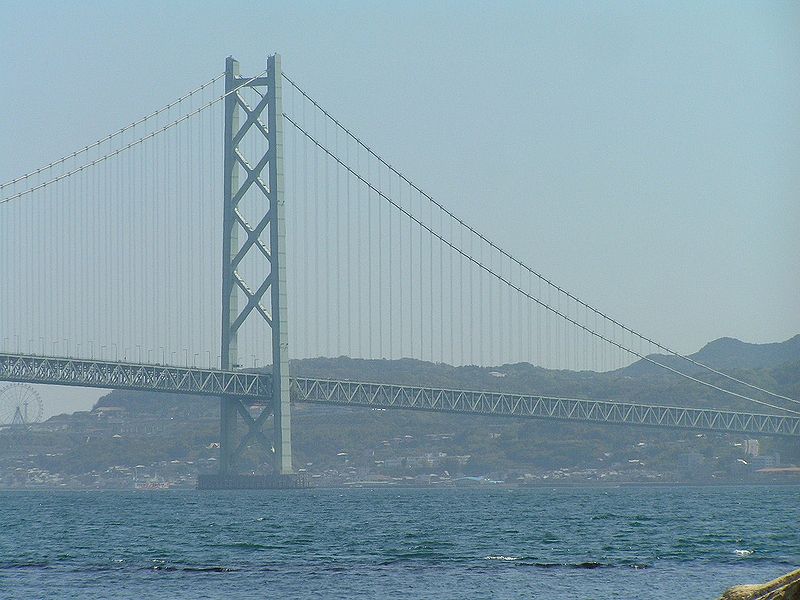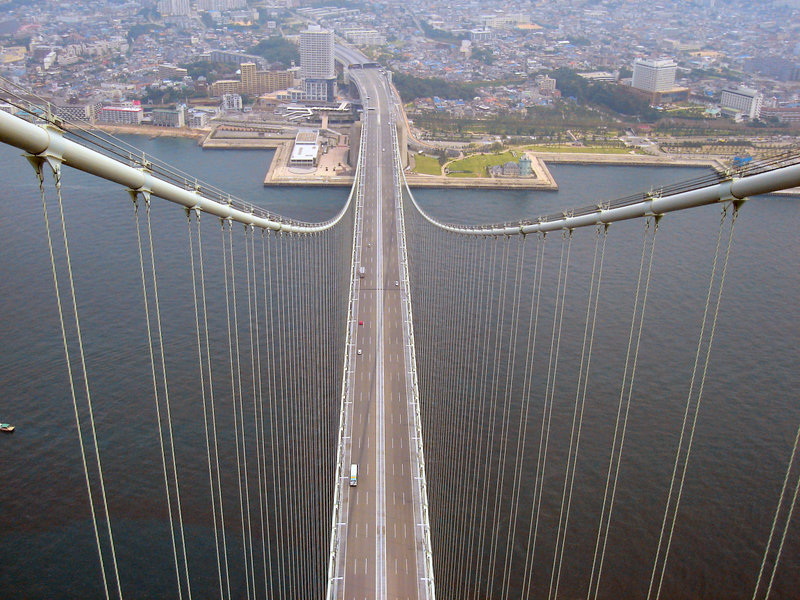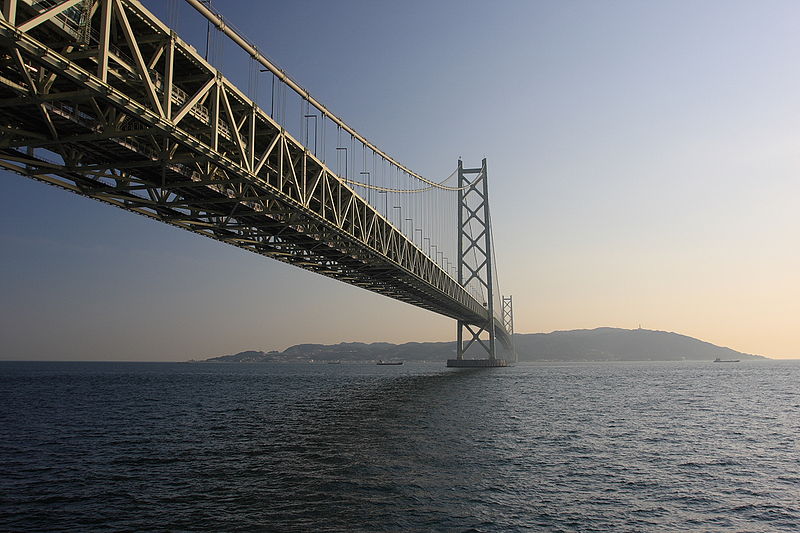| |||||||
Europe
North AmericaSouth AmericaAsiaAustralia and OceaniaAfrica |
Смотрите также: Akashi-Kaikyō Bridge The Akashi-Kaikyō Bridge, also known as the Pearl Bridge, is the world's longest suspension bridge (measured by the length of the center span of 1,991 metres/6,532 feet/1.24 miles). It is located in Japan and was completed in 1998. The bridge links the city of Kobe on the mainland of Honshū to Iwaya on Awaji Island by crossing the busy Akashi Strait. It carries part of the Honshū-Shikoku Highway. The bridge is one of the key links of the Honshū-Shikoku Bridge Project, which created three routes across the Inland Sea.
Akashi Kaikyō Bridge Carries 6 lanes of roadway Crosses Akashi Strait Locale Awaji Island and Kobe Design Suspension bridge Total length 3,911 meters (12,831 ft) Longest span 1,991 meters (6,532 ft) Clearance below 65.72 meters Opening date April 5, 1998
History Before the Akashi Kaikyō Bridge was built, ferries carried passengers across the Akashi Strait in Japan. This dangerous waterway often experiences severe storms, and in 1955, two ferries sank in the strait during a storm, killing 168 children. The ensuing shock and public outrage convinced the Japanese government to develop plans for a suspension bridge to cross the strait. The original plan called for a mixed railway-road bridge, but when construction on the bridge began in April 1986, the construction was restricted to road only, with six lanes. Actual construction did not begin until May 1986, and the bridge was opened for traffic on April 5, 1998. The Akashi Strait is an international waterway that necessitated the provision of a 1,500-metre (4,921 ft)-wide shipping lane.
Architecture The bridge has three spans. The central span is 1,991 m (6,532 ft), and the two other sections are each 960 m (3,150 ft). The bridge is 3,911 m (12,831 ft) long overall. The central span was originally only 1,990 m (6,529 ft), but the Kobe earthquake on January 17, 1995, moved the two towers sufficiently (only the towers had been erected at the time) so that it had to be increased by 1 m (3.3 ft).
The bridge was designed with a two-hinged stiffening girder system, allowing the structure to withstand winds of 286 kilometres per hour (178 mph), earthquakes measuring to 8.5 on the Richter scale, and harsh sea currents. The bridge also contains pendulums that are designed to operate at the resonance frequency of the bridge to damp forces. The two main supporting towers rise 298 m (978 ft) above sea level, and the bridge can expand because of heating up to 2 metres (7 ft) over the course of a day. Each anchorage required 350,000 metric tons of concrete. The steel cables have 300,000 km of wire: each cable is 112 cm in diameter and contains 36,830 strands of wire.
Comments: 0 |
|
|||||







































